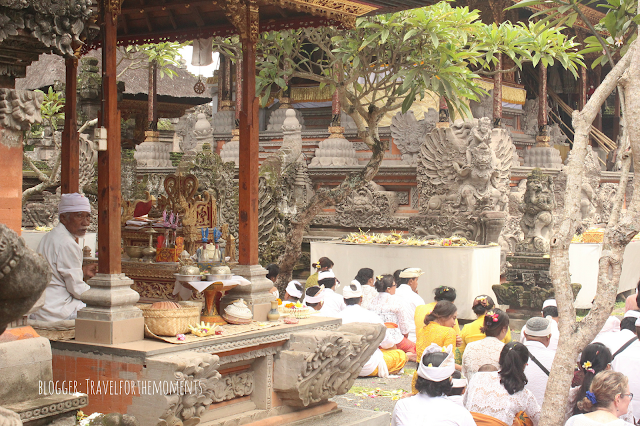Balinese Galungan Celebration 2016
Galungan is the largest celebration in Bali, Indonesia, the island of the gods. We are extremely fortunate to be here at this time and participate in the traditional prayer ceremonies. Galungan is an event based off of the 210 days Balinese calendar. Due to the shorter calendar cycle, there will be two Galungan days in 2016 (February 10 and September 7). If you would like to join the celebration be sure to plan accordingly. This day starts off a series of three days in Hindu ceremony and celebration that is unique to Balinese culture and differs from that of Indian Hindu traditions. Our experience allowed us to peer into a practice that is very much foreign to us; learning a thing or two from the dialogues we hold and the things we see.Joining in as foreigners
before we delve into the details, it is important to note that there are a few prohibitions that will prevent you from entering the temple and joining parts of the celebration.
- you must wear a sarong regardless of gender and age.
- sarongs are simply a large stretch of cloth that is used to wrap around the waist.
- It is optional to wear a sash, but most people will wear a complete set for the special occasion.
- (note, wet sarongs are worn differently for women if you are planning to go to Tirta Empul, also known as the Holy Spring Water Temple)
- for men: https://www.youtube.com/watch?v=lqbHUmOH0rY
- for women: https://www.youtube.com/watch?v=7deHsFNFhpA
- Do not go into the temple if you're menstruating!
- it is deemed dirty to go into the temple during menstruation, so its best to respect the practice and only observe from the outside if it happens to coincide with the day
- Don't snap endless pictures
- we all want to capture memories, but please understand the situation and don't be disrespectful snapping endless pictures during the entire ceremony. This is not a time to go shutter crazy, one of the girls there did not stop since she arrived, not even for the prayer portions. Locals kept looking at her and trying to avoid the camera, but she simply followed them with the lens. Don't be THAT tourist.
- All temple should be active this day
- most temples are closed to the public on regular days, but this is the special time to visit them!
- From our knowledge, any temple you go to will be hosting prayer services. So go to any that you desire.
Galungan is a celebration of the victory of goodness over evil, the victory of dhrama over adarma. The first day is the day to visit the temples and a day of prayer. The second and third day are dedicated to visiting family and friends, while the third day specifically marks the day ancestors spirits will return.
The ceremony
Locals will participate in ceremonies with family members first at their own family temple, often a section of the household for religious practices. The second ceremony is conducted in larger temples where prayers are led and holy water is used to cleanse. We participated at a local temple called Pura Dalem Puri in Ubud. It is not a well known temple to say the least, but it was crowded with the residents of this area.
The prayers were led by an elderly man with an MC behind him who spoke into the microphone with guidance through the prayers. Each separate prayer required a different gesture, placing various items of offerings matching the prayer. For one prayer participants held up plumeria flowers between their plams and speak their prayers. Once they have finished speaking their prayers, they use the flower as garnish on their head. For another prayer, participants held up intricate offerings made of banana leaves holding flowers and coins. We did not have a tour guide and don't understand the Indonesian language, but we assume that each separate prayer has its own meaning for safety, love, gratitude, etc.
When all prayers ended, everyone received holy water for cleansing. Each person must drink the water from their palms three times to cleanse their inner spirit. Once they have been cleansed inward, they splash the water over their head and face (some using petals to splash the water, some used leaves and brushes) . At the end of their cleanse, participants are then given rice to place between their eyebrows to signify abundance.
(in their daily practice they will also place the rice between their collar bone and eat a grain or two of rice as blessings)
Penjor (bamboo poles)
Everywhere we went, we saw large bamboo flower poles called "Penjor." Penjors are erected during special events such as weddings and holidays. Each household and business will erect one or more of these large bamboo poles to welcome back deceased relatives coming back as spirits as well as the Gods. We have been told by locals that the poles represent dragons. They are composed of a small offering container at the base representing the head and the long thin overhang as the tail. This is slightly different from some information I have found online stating that the penjors represent mountains, perhaps to different people there are different meanings and symbolism for the decoration.
Beware, Shops and Services will be closed.
If you are travelling Bali around these times, be aware that most if not all shops will be closed. Certain warungs (local diners) and restaurants aiming at tourists may still be open, so no worries about starving. Just make sure you don't need your laundry done or bike fixed on this day, or you will be very much disappointed.













0 comments:
Post a Comment